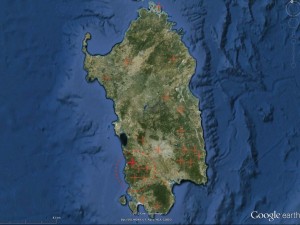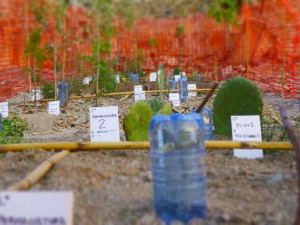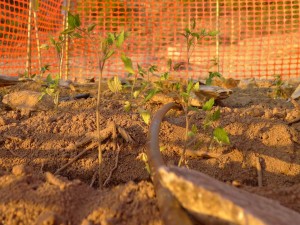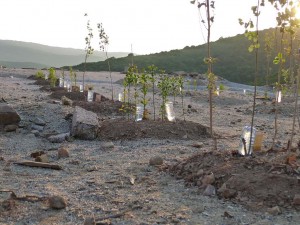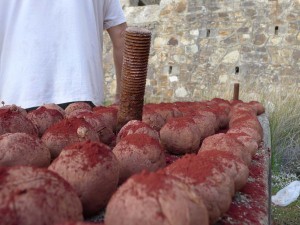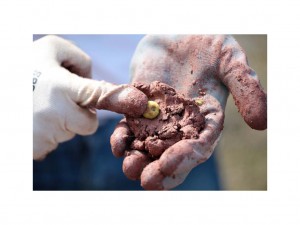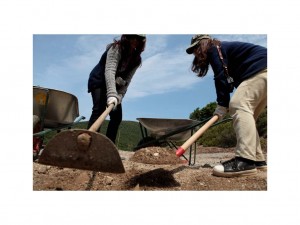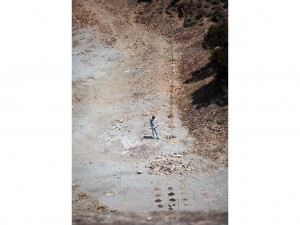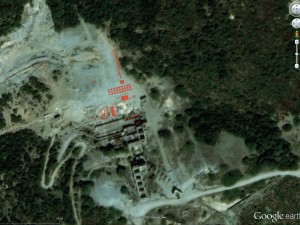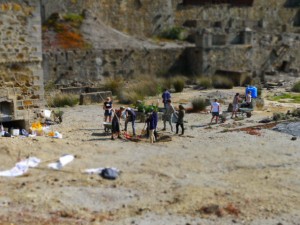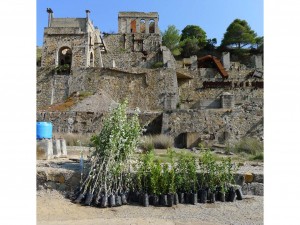The Landworks laboratorio del paesaggio 2012 (L3) situates its activity within the second official installation of Landworks. Founded by the assemblage of eleven young researchers from North America, Europe and Asia, the team performs within the geomorphologic limits of the Monteveccio mining region in Sardinia. Specifically, the perimeter of engagement concentrates on the infrastructure at the end of the mining facilities of Pireddu, Ingurtosu. Within this territory, the study centralizes on a seam located between the final mineral washing process and one of the region’s principal discard zones. This conceptually fertile, yet impoverished and abandoned “piazza” determines the territory of operations for the L3 team.
Important consideration includes territorial investigation at the micro, macro and meso scales, the industrial mining history and its impact on the landscape, heavy metal pollutants, the physical “nature” of remediation and the edible landscape. L3 research follows a daily course of investigations that guide the group across terrain following the miner’s foot-paths. On-site work includes regular testing and experimentation with materials and space using low-tech methods and a small array of hand-tools. External input is injected from ex-mining professionals in the fields of geology, indigenous edible horticulture and permaculture. The work’s visualization upon the selected terrain hopes to motivate a series of critical discussions that might catalyze a more serious engagement to the act of remediation for the site and region.
Resonating from the field-work and manual labor is a horizontal grid of test plots demonstrating three combinations of soils types from the L3 field of investigation, two of which are most prevalent and assumed to be polluted and one of which is a fertile substrate formed through natural decomposition.
3×9 grid of 3 different soil conditions in 1x1m tests beds planted with both edible and indigenous plants
3 square grid of 3 different soil conditions in 3x3m tests beds planted with indigenous plants (some of which are “heavy-metal” collectors) following a 4-zone permaculture pattern that includes edible plants
1 miners garden planted with a typical palette of vegetables
L3 preliminary conclusions include more questions than answers. Which modes of remediation will effectively begin to counter the environmental damage incurred? Where should they be deployed? Who will take responsibility for the future course-of-action?




